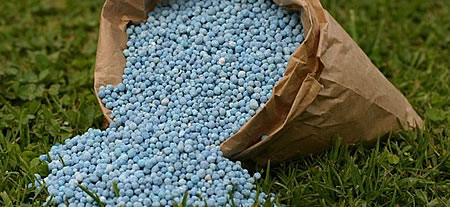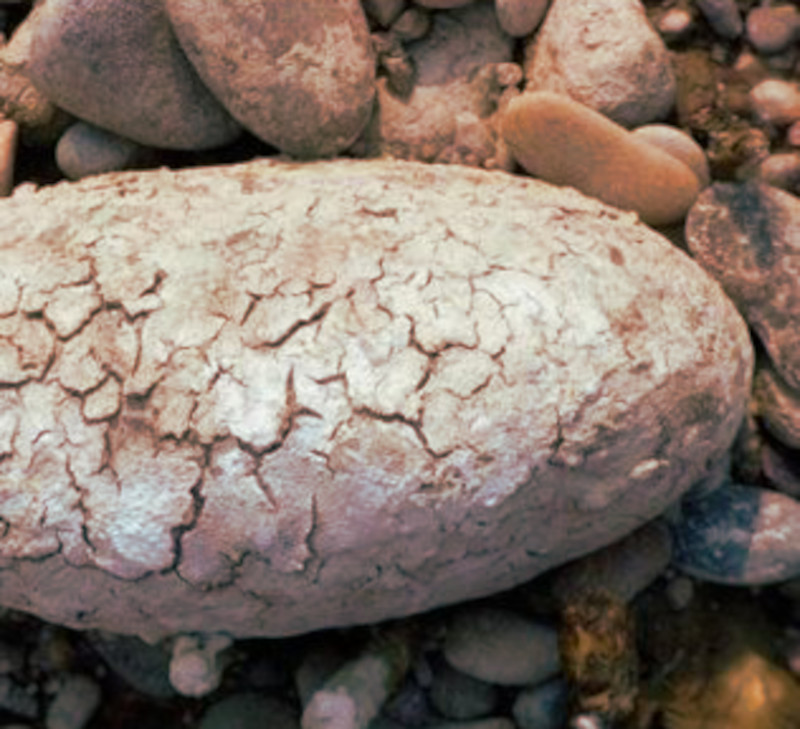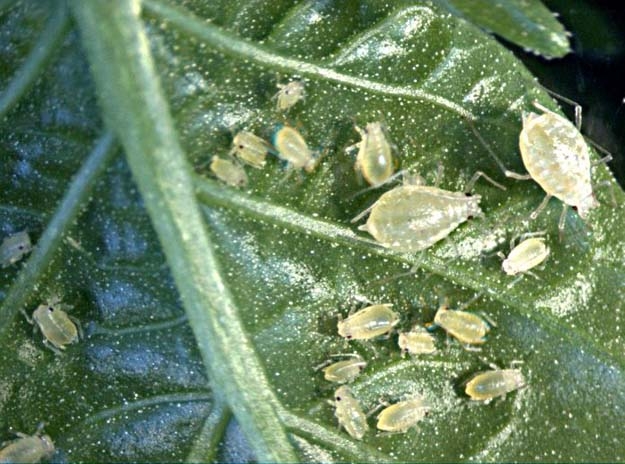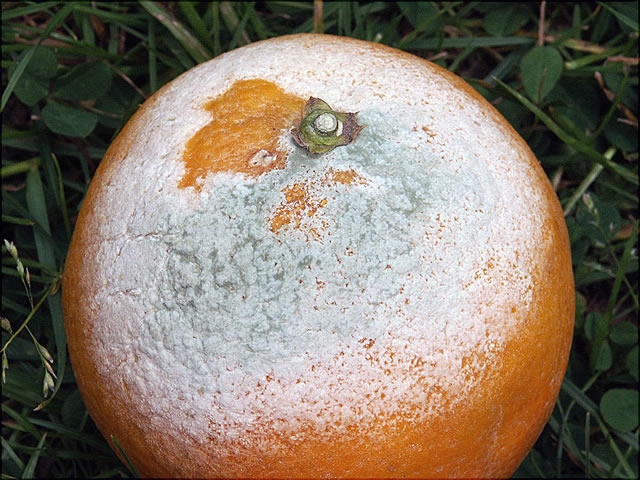Information from experts on fertilizing citrus trees (orange, lemon, tangerine trees). The A.S.E.E. Amyklon “LACONIA” of Sparta in Greece. Their products are well known and we can find them everywhere!
The A.S.E.E. Amyklon “LACONIA” since 1965 is a dynamic presence in the production of fresh citrus fruits, juices and by-products. It has privately owned facilities with modern technological equipment, highly trained scientific and technical staff, knowledge, experience and passion, covering a wide range of important activities of the industry.
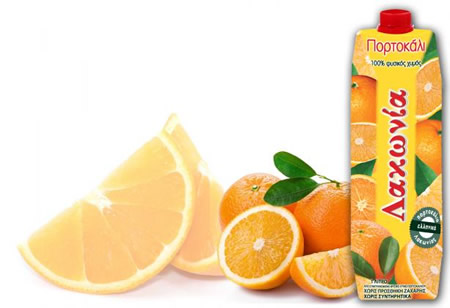
Who else but those who make their living from growing and processing citrus fruits can give proper instructions for their fertilization?
This is an article by Agronomist, Pan. P. Papadakos, Gen. Director of the A.S.E.E. Amyklon “LACONIA”.
General information on nutrients and fertilization
The knowledge of cultivators and gardeners on the subject of fertilization of citrus trees is very important and crucial in improving quality, increasing quantity and reducing production costs and therefore it is always useful to be engaged in information and study.
Nutrients are classified as follows:
- Organogenic elements: Carbon, hydrogen, oxygen, nitrogen.
- Macroelements: phosphorus, potassium, nitrogen, sulphur, calcium, magnesium, iron.
- Microelements: Manganese, copper, zinc, boron, cobalt, molybdenum, iodine, chlorine, vanadium.
- Minor elements: Silicon, aluminium, fluorine, nickel, chromium, titanium.
- Opportunity Elements: Bromine, cesium, lead, selenium, tellurium, arsenic, silver, lithium, gold, tin.
In order to give a satisfactory quantitative and qualitative production, citrus trees need fertile, water-permeable soils, not compact clay or calcareous, but slightly acidic (optimum pH = 6), with ample watering.
All the necessary nutrients should be in digestible form and in balanced quantities (proportions) at the right time of year so that the trees can grow normally. By balanced quantities we mean neither excessive, as trees may develop toxicity, quality reduction, etc., nor deficient, as they may develop nutrient deficiencies.
In other words, “diseases” caused by poor nutrition and presenting themselves with specific symptoms linked to the abnormal absorption of deficient elements.
Again, it is emphasized that the use of any fertilizer must be “normal” and “reasonable” and only after the cooperation and suggestion of an Agronomist.
Excessive use of fertiliser, apart from increasing production costs, can cause side effects on trees with adverse effects on growth, productivity and fruit quality.
Nutrients can be applied either in the soil in solid form (granular), dissolved in irrigation water (fertigation), or by spraying the leaves (translaminar), after being dissolved in water in the correct proportion.
The amount of fertilizer to be used takes into account the size of the tree, the type and fertility of the soil, the type or variety of citrus tree, the rootstock on which it is grafted, etc.
Therefore, a larger quantity is given to large trees, as well as to barren, poor soils.
In sandy soils we also apply a larger amount of nitrogen compared to heavy clay soils, since in these soils it is easily leached out by watering.
On the other hand, we apply more potassium to heavy clay soils than to sandy soils, because the clay holds it in, making it difficult for the trees to take it up.
In soils of medium consistency, producers should use moderate amounts of fertilizer.
The main elements in the fertilization of citrus trees
1. Nitrogen (N)
This is the predominantly tissue plastic element of plants (and all living organisms).
a) Nitrogen fertilization has the following effects:
Positive:
- increases vegetative growth
- it increases the number of fruits that set and ripen
- increases the contained juice
- increases their resistance to frosts
Negatives:
- reduces the size of the fruit
- increases the thickness of the rind
- reduces sugars and vitamin C
- increases acidity
- delays ripening and replanting of late varieties (Valencia) in spring and summer
- The fruits are tasteless, soft, with watery flesh and are not resistant to handling (extraction)
All this is more pronounced when nitrogen is applied in greater excess and even when phosphorus is in deficiency
b) Nitrogen deficiency in orange trees causes:
- Chlorosis (yellowing) all over the leaf lamina of the tops before spring germination (pale green-white-yellow). After regrowth it generalizes to all leaves
- Reduction of germination in spring
- Early leaf drop
- Intense yellowing of the leaf nerves as well

c) Treatment of nitrogen deficiency
The main simple nitrogenous chemical fertilizers that can be used for the fertilization of orange trees are:
- Ammonium sulphate (21 % nitrogen). It is quite soluble and in order to be absorbed, the soil must undergo the process of nitrification (5-8 weeks). It must therefore be applied at least 5 weeks before flowering (second half of March). It is recommended that it should be applied on all but light, permeable and non-calcareous soils. It is retained by clay colloids (not easily leached by irrigation water).
- Ammonium nitrate (33,5 % in nitrogen). It has 1/2 nitrogen that is immediately absorbable and 1/2 ammonium, it is a flammable, fast-acting, very soluble fertilizer, for this it is used superficially, but it is not retained at all by the clay colloids (it is easily washed off),
- Calcium ammonium nitrate (26% nitrogen). It is Ammonia Nitrate mixed with lime (3:1). It has 1/2 nitrate nitrogen and 1/2 ammonia. It is used on soils with a lack of calcium, superficially, but it is useful to cover it (filling at 5-7 cm).
- Ammonium nitrosulphate (26% nitrogen). It is Ammonia Nitrate mixed with Sulphate (50%:50%). It has 1/4 nitrate nitrogen and 3/4 ammonia. It is the predominantly acidifying nitrogen fertilizer (reduces soil pH) and should be digested.
- Urea (46% nitrogen): it is a slow fertilizer, as it needs to be broken down into ammonia and then nitrified so that it can be absorbed. Therefore, it is used in the soil at least 7-8 weeks before flowering (early March) and in transhumance sprays at a rate of less than 1% pure urea, with formulations, without diuresis. It must be digested otherwise nitrogen losses are very high.
d) Application of nitrogen fertilisation
Add 0.4-0.8 units of nitrogen per tree, depending on the size and composition of the soil.
This corresponds approximately to:
- 2 – 5 kg of ammonia sulphate (21-0-0).
- 1.5 – 2.5 kg of ammonia nitrate (33.5-0-0).
- 2 – 3.5 kg of calcium ammonium nitrate and ammonium nitrosulphate (26-0-0).
- 1 – 2 kg of urea (46-0-0 ).
Nitrogen fertilisation should be applied in one dose or at most in two doses, the first of which should be three-quarters of the total and the second, one-quarter (after the petals have fallen from the flowers). It should not be applied later because it may delay ripening, reduce the quality of the fruit (swelling, curling), prolong germination in autumn and thus increase the sensitivity of the trees to cold (frost), etc.
Ammonium phosphate (16-20-0 or 20-10-0) should be excluded from the fertilisation of orange trees because it is associated with fruit curling (eschar).
2. Phosphorus (P)
Although a lack of phosphorus has rarely been observed in Greece in citrus trees, the regular supply of phosphorus to the tree is very important for the production of good quality fruit.
a) Fertilization with phosphorus compounds has the following effects:
Positive:
- It improves fruit quality
- Improves the quality of the fruit
- Reduces acidity
- Reduces the thickness of the rind
- Does not affect the size of the fruit
- Improves the availability of manganese
- Regular feeding has a positive effect on ripening time
Negative:
- Excessive use adversely affects fruit ripening time (delays ripening)
- Reduces the availability of zinc (causes zinc deficiency)
- Reduces the availability of copper
b) Phosphorus deficiency causes:
- Reduction in tree growth (low vigor, weak germination, dull green leaves that fall quickly, new leaves few and small)
- It increases acidity and reduces sugars
- It reduces the juice content
- Delays ripening
- Increases the thickness of the rind
- The fruit becomes soft and the center becomes hollow (loose)

c) Treatment of phosphorus deficiency
The main phosphorous fertilizers that can be used on orange trees are:
- Simple superphosphate (0-20-0). It has the highest solubility and mobility in the soil than other phosphorus compounds. However, these are relatively very small, so it is necessary for the fertilizer to be digged into the soil.
- Dense superphosphates (0-44/46-0).
- Polyphosphates (0-65/82-0).
d) Application of phosphate fertilisation
Add 0.4-0.8 phosphorus units to the soil in winter and then incorporate them as necessary, but at a depth of no more than 5-7 cm. This corresponds to 2-4 kg (0-20-0).
3. Potassium (K)
a) Potassium fertilisation has the following effects:
Positive:
- It contributes to an increase in fruit size
- It improves the structure of the flesh (makes the fruit heavier)
- Increases the resistance of trees to drought
- Increases the trees’ resistance to cold
Negatives:
- Increases the acidity of the juice
- Causes thickening of the rind (fruits are coarse-skinned and rough)
- Delays ripening
- Reduces the juice content
- Adversely affects the availability of magnesium
b) Potassium deficiency in orange trees causes:

- Vegetation attenuation with diffuse chlorosis
- Bruising of the leaves and flowering
- Fruits small in size with thin smooth rid
- They are very sweet fruits (they have more sugars)
- Small brown or necrotic spots on the leaves
c) Treatment
The main potassium fertilizers that can be used are:
- Potassium sulphate (0-0-48): it has low solubility in water and mobility in the soil, therefore it is not used on the surface but digged in the soil after it is applied. If it is thrown on the surface (in the case of application of an uncultivated crop) its effectiveness is considerably reduced. It is considered the best adapted form of potash fertiliser for all soils.
- Potassium nitrate (13-0-44/46): has better mobility than all potash formulations, increased efficiency and naturally 13% nitrogen in nitrate form (directly assimilable).
d) Application of potassium fertilization
Add 0.5-1 unit of potassium to the soil in winter, i.e. about 1-2 kg of potassium sulphate or potassium nitrate per tree and necessarily incorporate it with light hoeing (5-7 cm). It is possible to fertilise with potassium every 3-4 years with quantities of 4-5 kg of potassium sulphate per tree.
4. Mixed and compound fertilisers
Mixed fertilisers, i.e. perfect mechanical mixtures of simple forms such as (4-8-12), or compound fertilisers, i.e. chemical compounds of two or three elements such as ammonia phosphate (16-20-0 and 20-10-0), (11-15-15), (12-12-12) and (8-16-16), may be used in fertilisers.
Tip: Cultivators and gardeners should use simple chemical fertilizers and not compound or mixed fertilizers. If they use them this should only be done after consultation with an agronomist, as they may have a bad effect on the quality and quantity of their production.
Trace elements
Iron deficiency

It is the most common chlorosis (yellowing) and is more common in lemon than in orange blood-juice (sanguine, etc.) trees. Iron is essential to plants because it plays an important role in chlorophyll formation and respiration.
Symptoms:
The leaves slowly lose their green color, with the new leaves of the top of the shoots first, until they turn yellow, while the veins remain green. In advanced stages, the veins also turn yellow, the top shoots dry out, production decreases and quality deteriorates. Iron deficiency is aggravated by excessive moisture, poor soil aeration, excessive phosphate fertilisation, excessive calcium, excessive zinc and excessive bicarbonate content of irrigation water.
It is recommended:
- Avoid excessive phosphate fertilization and deep ploughing
- In calcareous soils, do not apply excessive irrigation
- Fertilizers such as ammonium sulphate, potassium sulphate and manure which lower the soil pH help to control it
- When food deficiency is mild, spray organic (chelated) iron at the time of germination (spring or early autumn) at a dose of 0.1 %
- When the trophic deficiency is in an advanced stage add organic iron to the soil in spring at a dose depending on the iron content e.g. secestrone 150-200/tree) or inorganic iron sulphate up to 2 kg per tree (it is slow acting)
Zinc deficiency

This is one of the most widespread deficiencies of citrus trees in Greece and is more common in orange trees than in other citrus fruits.
Zinc is essential in the formation of chlorophyll, some plant growth hormones, as well as several essential enzymes that facilitate metabolism (nutrition).
Symptoms:
At first, scattered chlorotic spots appear on the leaves. The veins and the rest of the leaf blade remain green. Slowly the yellow spots spread and take over the whole leaf. Zinc deficiency may be due to insufficient amount of the zinc element in the soil, low solubility of the element present at high pH, large amounts of phosphorus, potassium, nitrogen, copper, etc., excessive soil moisture and abundant manure fertilization. It also causes new leaves with smaller sizes and short rot. Production is reduced in terms of quantity and quality. The fruits become small, coarse-skinned, woody, dry and without taste.
Recommended:
- Avoid excessive fertilization with phosphorus, potassium and nitrogen
- Avoid excessive irrigation
- At the beginning of germination in the spring (when it has reached 1/3 of its final length) it is necessary to spray zinc sulphate 23% at a dose of 300 g per 100 kg of water, with the addition of a wetting agent or mixed with 150 g of slaked lime. The tree should be well watered
- This spray should not be applied during flowering
- It is also possible to repeat it in the small growth in autumn
- Zinc oxide can also be used at a dose of 0.2 %
- Use ZINEV as a fungicide in the spray against phytophthora, because its main element is zinc.
Magnesium deficiency
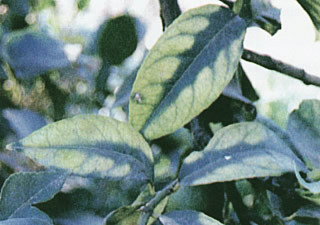
Magnesium is an essential component of plant chlorophyll and its deficiency is usually found in leaching soils (western Greece), with the most susceptible species being the Frapa, but also all other citrus trees.
Symptoms:
Magnesium deficiency causes midvein chlorotic spots along the leaf that eventually coalesce leaving an area at the base green in the shape of a spearhead (or arrowhead). They occur mainly on old leaves especially in autumn. The leaves fall prematurely, the trees become susceptible to frosts, production is reduced and the quality of the trees deteriorates.
Recommended:
- Limit fertilization with potassium or manure, because they do not facilitate the availability of magnesium
- In medium to light sandy soils, add 300-500 g of zinc sulphate per 40 kg of fruit in autumn or early spring. The results are slow to show (2-3 years)
- In heavy clay soils, only spray each new growth with 1% magnesium nitrate
- Spraying with 1% magnesium nitrate can also be done on sandy soils until magnesium sulphate reacts with the soil
- To this spray add a wetting agent (scouting agent)
Manganese deficiency

Manganese is an essential element for the action of enzymes and for the synthesis of chlorophyll. It is present in all citrus fruits, but the lemon tree is the most sensitive species.
Symptoms:
Present on all leaves, but especially on older leaves and most pronounced on the shaded side of the trees. They are characterised by a not very intense (faded) yellow spotting or otherwise as greenish-yellow areas between the veins which, however, with a band around them, remain green.
Except in extreme cases, the size of the leaves, the fruit and the quantity of production are not affected.
Recommended:
- Fertilize with substances that lower the pH of the soil (ammonium nitrosulphate, sulphur, ammonium sulphate, etc.)
- Use a fungicide formulation with manganese as a basic element (MANCOZEB marketed under the names M45, DITHANE ULTRA, etc.)
- Spray 1% manganese sulphate therapeutically on new growth
Other nutrient deficiencies
Citrus trees may be deficient in other elements such as boron, calcium, copper, etc. Then it is necessary for an agronomist to visit the estate and make a diagnosis. Treatment can then be applied.
Pan. Papadakos
Agronomist – General. Director of the A.S.E.E. Amyklon “LACONIA”, Sparta, Greece
Tags: AGRONOMIST • AMMONIA • CITRUS FAMILY • DEFICIENCIES • FERTILIZATION • FERTLIZERS • LEAVES • NITROGEN • ORANGES • PAPADAKOS AGRONOMIST • PHOSPHORUS • POTASSIUM • PREVENTION • SYMPTOMS • TANGERINE TREE • TRACE ELEMENTS

